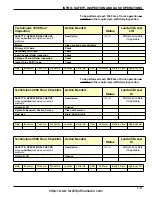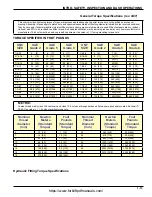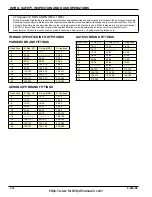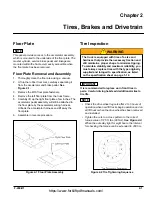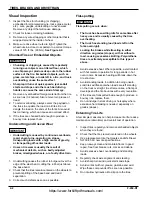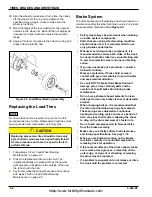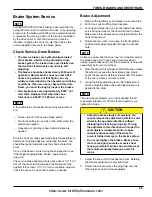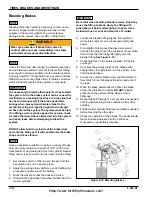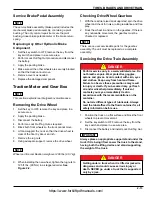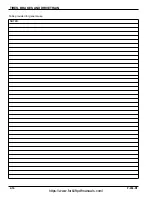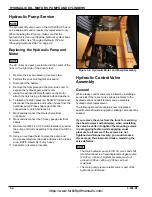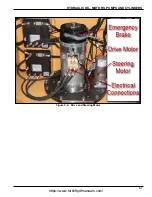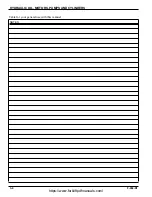
TIRES, BRAKES AND DRIVETRAIN
2-11
3.
Apply the parking brake, disconnect the battery and
block the wheels.
4.
Remove the floor plates.
5.
Remove the master cylinder fill cap.
NOTE
Note: Siphon out as much fluid as possible. Install and
tighten the fill cap before removing the cylinder.
6.
Place rags under the brake line connections. Have a
plastic cap or bag handy to cover the end of the line
to limit fluid spillage.
IMPORTANT
Brake fluid will damage paint. Cover truck body parts
and be careful not to spill fluid during this procedure.
7.
Using a flare-nut wrench, disconnect the brake fluid
line at the rear of the cylinder.
NOTE
Flare-nut wrenches should be used to prevent rounding
off the corners of the brake line fitting.
8.
Carefully pull the brake line away from the cylinder.
Seal or plug the brake line and master cylinder port
to prevent fluid loss and/or contamination.
9.
Remove pin from clevis adjoined to the master
cylinder crank plate.
10. Remove the two master cylinder mounting bolts and
remove the cylinder from the truck.
11. Remove the reservoir cap and discard any fluid
remaining in the reservoir.
12. Remove rubber boot and clevis from the master
cylinder.
13. Remove fittings from the opposite end of the master
cylinder.
NOTE
Whenever the master cylinder is removed and/or
replaced, the hydraulic brake system must be bled. See
“Bench Bleed the Master Cylinder”. See Figure 2-9.
14. Install the new master cylinder in reverse order.
NOTE
Since high pressure is not involved in the bench bleed
procedure, your finger can be used to plug the cylinder
hole and prevent the intake of air. Wash hands after this
procedure or wear protective latex glove. Kits to aid in the
bench-bleeding of master cylinders are also available at
your local auto parts store.
Bench Bleed the Master Cylinder
1.
Support the cylinder in a vise. See Figure 2-9.
2.
Remove filler cap assembly.
3.
Fill the master cylinder with SAE J1703 or DOT 3
brake fluid.
4.
Connect a length of tubing to fitting block and
immerse the other end below fluid level.
5.
Apply power cylinder push rod full stroke. Repeat
until air bubbles have ceased.
6.
Remove brake tubing from fitting block and reservoir.
7.
Install plugs and filler cap to hold fluid in cylinder.
8.
Install unit on truck.
9.
Connect brake lines.
10. Bleed brake system as described on page 2-12.
Figure 2-9 Bench Bleeding the Master Cylinder
Check Master Cylinder Fluid Level
The master cylinder is located below the driver’s
compartment floor plate.
1.
Remove the left floor plate. See page 2-1.
2.
First clean the reservoir cap to avoid fluid
contamination, then remove the fill cap.
3.
Additional fluid is needed when the fluid level is 1/2”
from the top surface of the master cylinder.
4.
Add fluid as needed. DO NOT OVER FILL. Use only
DOT3 brake fluid from a clean, sealed source.
5.
Reinstall the reservoir fill cap.
https://www.forkliftpdfmanuals.com/

